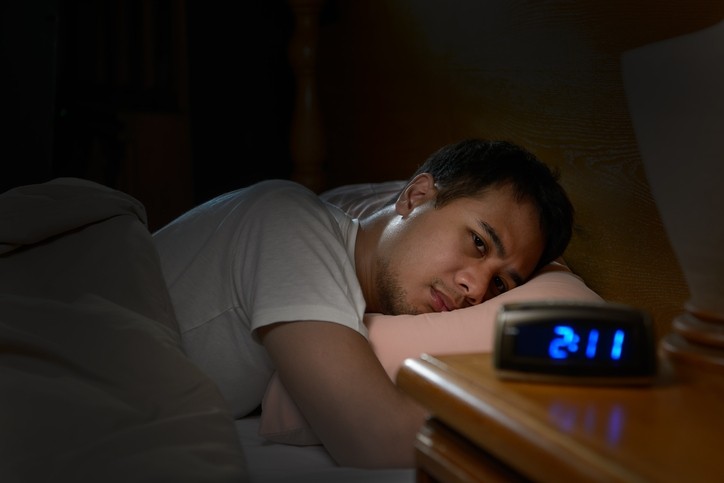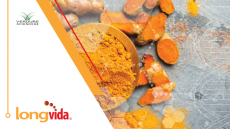Low folic acid levels linked to severe sleeping difficulty

The new study analysed data collected via the National Health and Nutrition Examination Survey (NHANES, 2005-2006 and 2007-2008), investigating the correlation between serum total folic acid concentration and severe difficulty falling asleep.
Data illustrates higher serum total folic acid concentration was associated with lower odds of severe difficulty falling asleep and the subgroup analysis showed that this correlation was more significant in males, smokers, and nondiabetic population.
The authors suggest the mechanism of action could be via a direct impact on circadian rhythms or via the synthesising of neurotransmitters, such as serotonin and melatonin, thereby impacting sleep-wake cycles.
They conclude: "Our study indicates that lower serum total folic acid levels were found to be linked with a higher risk of severe difficulty in falling asleep among American adults, especially in men, those who live alone, and those with a positive smoking history, hypertension, or diabetes. These results could offer new perspectives on how to manage insomnia, but more research is necessary to validate them."
Background
Insomnia is defined as difficulty falling asleep, difficulty staying asleep, and early awakening, which happens at least three times a week for a month. It is estimated to affect up to 50% of the adult population globally.
Folic acid, also called vitamin B9, is a crucial nutrient that plays essential roles in various physiological functions, such as neurotransmitter production, DNA synthesis, and cell division. Several studies have investigated the link between serum total folic acid concentration and insomnia, but the findings are inconsistent.
The present study concentrated solely on difficulty falling asleep and defined severe difficulty falling asleep as over 15 times of difficulty falling asleep per month.
The data from the National Health and Nutrition Examination Survey (NHANES) were analysed to explore the risk factors of severe difficulty falling asleep and examine the clinical relevance between serum total folic acid concentration and severe difficulty in falling asleep among US adults.
The authors suspected that some factors such as gender, unhealthy living habits may be covariates, so they did the correction and stratified analysis to control the impact of these.
The study
Participants in the NHANES programme received serological examinations and answered questionnaires on demographics, life behaviours, disease information, and sleep conditions.
For the current study, exclusion criteria led to a final sample of 8,926 participants' data to be analysed.
Based on their answers to the question “How often do you have difficulty falling asleep?” participants were separated into those with or without severe difficulty falling asleep. The groups were labelled 'severe difficulty falling asleep' (SDFA) or 'control'.
The link between serum total folic acid and severe difficulty in falling asleep was examined, for which multivariable logistic regression models were utilized to calculate the odds ratios (ORs) and 95% confidential intervals (CIs).
Three multivariable logistic regression models were constructed, with serum folic acid levels grouped into quartiles and the lowest quartile used as the reference category. Subgroup analyses were also performed based on gender, smoking history, and diabetes.
Resulting data revealed, of the 8,926 participants (52% females and 48% males; mean (SD) age, 46.8 years), 7.65% had severe difficulty falling asleep.
In the two groups with or without severe difficulty falling asleep, variables including gender, education level, marriage status, smoking history, hypertension, diabetes, and serum folic acid were all significantly different. Participants with severe difficulties in falling asleep had lower serum folic acid levels and were more likely to be female, live alone, and have positive smoking history, high blood pressure, or diabetes.
Compared with those at the lowest quartile of serum folic acid level, participants at the highest quartile were found to have reduced odds of severe difficulty in falling asleep (OR = 0.55, 95% CI, 0.40–0.74; p trend <0.001).
What's more, the data illustrate a more significant inverse association between folic acid concentration and difficulty in falling asleep among males.
Discussing mechanisms of action for folic acid to impact sleep, the authors note folic acid’s role in neurotransmitter synthesis and circadian rhythm regulation might be two potential mechanisms.
Their report states: "In the first hypothesis, folic acid is involved in synthesizing neurotransmitters, such as serotonin and melatonin, which are known to regulate sleep–wake cycles. Specifically, serum folic acid takes part in the synthesis of 5-hydroxytryptophan (5-HTP), a precursor of serotonin. Serotonin, in turn, is a precursor to melatonin, the hormone responsible for regulating sleep. Therefore, low serum folic acid levels might lead to an imbalance in these neurotransmitters and contribute to difficulty falling asleep.
"In the other hypothesis, folic acid has been reported to influence circadian rhythms. Circadian disruption may lead to sleep disturbances such as delayed sleep phase syndrome, affecting the ability to fall asleep at a desired time. It is plausible that altered serum folic acid levels might modulate circadian functioning, thereby impacting sleep quality."
They say more comprehensive research is needed to further explore additional possibilities and investigate the dose–response relationship between serum total folic acid levels and difficulty in falling asleep.
The authors note limitations of the study include the potential for unmeasured variables that may bias the results. They also not the cross-sectional design, preventing the establishment of a causal relationship. Also, residual confounding effects of some unstratified factors and multiple comparisons issues may remain in the observed treatment-outcome effect.
Source: Frontiers in Neurology
https://doi.org/10.3389/fneur.2023.1225403
“The association between serum total folic acid concentration and severe difficulty falling asleep in US adults: NHANES 2005–2008”
Authors: An Haoyu, Xue Qiyun, Zhang Jingyi











